| The Kapsa monastery
stands on the south coast, 7 km east of
Makrygialos. It is dedicated to
Sct.
John the Baptist
and was built in at least two stages, as the north wing of the church
which is built in a cave in the rock, is considerably older than the rest
of the monastery complex.
|

|
|
|
|
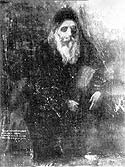
|
Everything indicates that the
cave has been inhabited by hermits
since Byzantine times, but during the 16th century the area was exposed to
pirate attacks and the monastery was destroyed. Even though the locals
quickly repaired the worst damages, another couple of centuries would pass,
until the area began to flourish again. This happened in 1841 when Gerontogiannis took possession of the monastery from its then owner
Chatzis Nikolaos Zafeiris.
|
|
Gerontogiannis
started to repair and extend the few buildings of the monastery, but the
work did not make much progress because of his many church duties. His
stay on the island of Kassos, near Karpathos, some years later delayed his
work even further.
|
| Not till after 1861
the work speeded up. Monk's
cells, rooms for pilgrims, kitchens and
cisterns were built, but primarily, the church was extended into two naves
of which the inner (and oldest) is dedicated to
Sct.
John the Baptist, while the new one is dedicated to the Holy
Trinity.
|
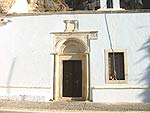
|
| The wood carver
Chatzis Minas from Lassithi made in 1869 the
beautiful templo (the picture-wall between the nave and the choir of the
church) for which the saint-painter Antonios Alexandridis painted icons
the following year.
|
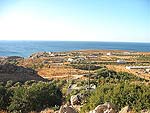 |
After Gerontogiannis' death in
1874, most of the monks left and the monastery was allowed to fall into
decay, until his grandson, Iosif Gerontakis, was made abbot of the
monastery some years later. Iosif was - as his grandfather - very dynamic
and he extended the monastery with new monk's cells, cultivated the land
around the monastery, brought a water pipe to the monastery from the
spring at the nearby Agii Saranta church, and he furthermore extended the
Panagia monastery in the nearby little village of Kalo Nero. |
| View
over Kalo Nero
|
|
|
|
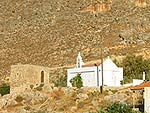 |
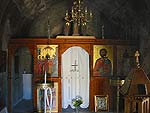 |
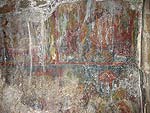
|
The church
in Kalo Nero |
Templo
of the church
in Kalo Nero |
Fresco
from the church
in Kalo Nero |
|
|
|
|
|
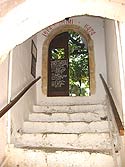 |
The Kapsa monastery
worked independently until the year 1900 when it,
owing to a shortage of monks, was placed under the Toplou monastery, which
is still sending an ordained monk to Kapsa to read mass and to inspect the
monastery that meanwhile has become a convent.
|
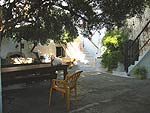
|
|
|
|
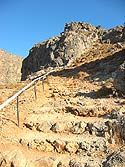 |
From the western part
of the monastery's back side a flight of steps leads up to the cave
where
Gerontogiannis lived as a hermit. The cave is situated on the steep slope of
the Pervolakia gorge and has a beautiful view over the area and the Libyan
Sea.
|
|
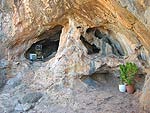
|
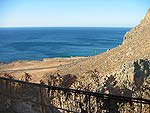
|
|
|
|











